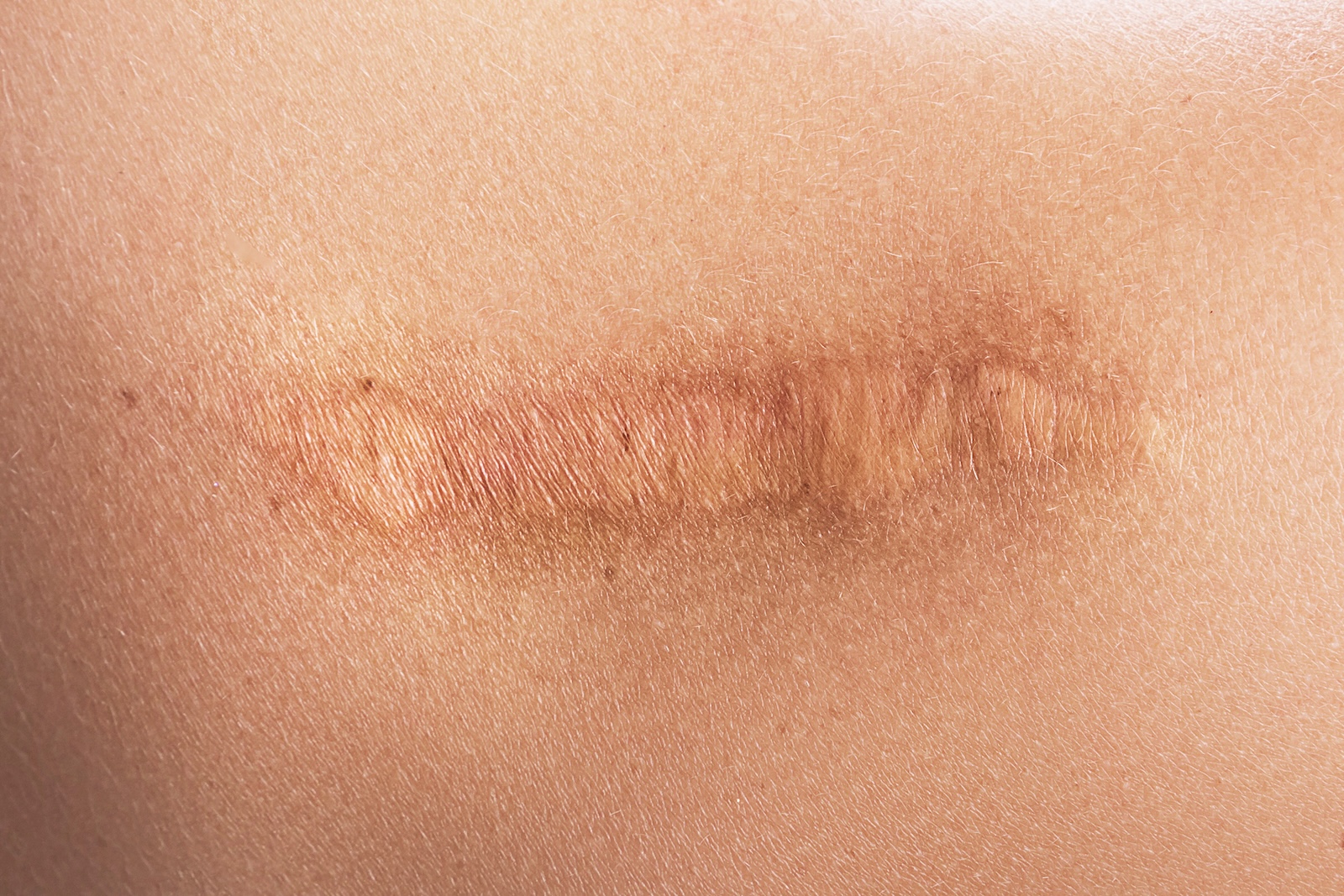
A microdiscectomy can be a life-changing operation for people who suffer from pain caused by a herniated disc. This spine surgery removes the portion of the damaged disc that is pushing into the nerve canal and causing pain. While a microdiscectomy can significantly reduce pain levels and restore a patient’s range of motion, it can also create some limitations that remain after recovery.
Post-surgery restrictions are common in many operations, even when they are successful. This guide will cover everything you need to know about herniated disc recovery and how to manage it effectively.
Understanding Microdiscectomy Surgery
Your spine is made up of 24 vertebrae that are each protected by shock-absorbing cushions called discs. When these discs are pushed out of place – usually into the nerve canal – it causes a herniation. While many herniated discs can heal on their own, some continue to slip and push further into a patient’s nerves. This experience can be incredibly painful and limit a patient’s ability to move, work, and enjoy life.
A microdiscectomy is a minimally invasive surgical procedure to remove part of a herniated disc that is pressing on the spinal nerves. The breakdown of the word micro-disc-ectomy translates to small-disc-removal. It differs from a comprehensive disc replacement, where the entire disc is removed and replaced with a more durable, artificial model.
While a microdiscectomy is commonly used to treat herniated discs, it can also treat other spinal conditions like sciatica, where a disc pushes into the sciatic nerve. Patients with severe herniations or experiencing late-stage sciatica symptoms might not respond to non-surgical treatments, which means an operation is the best option to alleviate pain.
Common Permanent Restrictions After Microdiscectomy
While a microdiscectomy can eliminate uncomfortable herniated disc symptoms and restore a patient’s range of motion, it comes with some permanent barriers that patients must be aware of. Some patients may need to make lifestyle changes or adjust their hobbies following the procedure to prevent aggravating the injury or causing another herniation. Here are a few common restrictions that doctors ask patients to follow.
Limited Heavy Lifting
After a microdiscectomy, patients are asked to avoid heavy lifting, as the spine is vulnerable after this operation, and putting excess strain on it can reaggravate the disc.
Heavy lifting doesn’t just apply to weight-lifting workouts. It also means avoiding picking up heavy objects at work, carrying suitcases on vacation, or even picking up your kids. Avoiding heavy lifting may require lifestyle changes, but it also creates opportunities to build healthy habits. Instead of carrying a heavy duffle bag to the airport, for example, you can invest in a quality roller suitcase that you can continue to use in the future.
Avoiding High-Impact Activities
High-impact activities can also hurt your spine during the healing process and in the years following surgery. Ask your doctor about common hobbies like running and contact sports, which are considered high-impact and high-risk.
If you are passionate about these hobbies, look for healthy alternatives. For example, many runners enjoy the transition to long-distance cycling or swimming, which are low-impact exercises that still have cardio and mental health benefits. You can still live an active lifestyle after a microdiscectomy, provided you choose activities that support spinal health.
Limitations in Bending and Twisting
After patients heal from their microdiscectomies, some notice that they have reduced flexibility and a lower range of motion than expected. Twisting and bending can be difficult and even cause further spine injury.
In this case, physical therapy may help your muscles recover from the operation. You should also develop healthy twisting and bending habits to navigate the world more easily. The first few times you need to pick something up might be difficult, but the movements will feel more natural over time.
Long-Term Pain Management Strategies
While surgery is considered a permanent solution to a herniated disc, and microdiscectomies have high success rates, patients may experience some lingering discomfort or nerve sensitivity post-surgery.
Your doctor should schedule a post-operative appointment to review your symptoms and pain levels. They can recommend strategies for ongoing pain management and treatments to support the healing process. They may ask you to attend physical therapy, add core-strengthening exercises to your daily routine, and try hot and cold therapy. They may also occasionally prescribe medication to help alleviate long-term discomfort.
In most cases, patients take several steps to complete their healing journies. Each treatment option works with others to support long-term health.
Risk of Recurrence or Reoperation
Microdiscectomies have high success rates, especially when experienced spinal surgeons complete them. However, a successful operation doesn’t mean a patient will never have back problems ever again. Here are a few potential risks that come with physical strain.
Recurrent Disc Herniation
Because the spinal column is made up of multiple discs, you may experience another herniation in another part of your back. This herniation could also require surgery to reduce your pain levels. Some disc conditions, like herniations and degenerative disc disease, are hereditary. This means you and your family members could be more likely to experience herniations.
If you or your family members are prone to herniations, take steps to practice good spinal health. Maintain proper posture and participate in regular, low-impact physical activity. Practice safe lifting techniques so you don’t put excess pressure on your spine.
Adjacent Segment Degeneration
When one disc or vertebrae is affected by a herniation, it can push other discs out of place. This is known as adjacent segment degeneration because multiple discs are affected by one cause. If you experience pain in your back after you heal from your microdiscectomy, it could be the adjacent discs, not the one that was addressed.
Adjacent segment degeneration is why your doctor recommends regular checkups following surgery. These appointments allow you to share any discomfort you are experiencing so your doctor can catch problems before they become severe.
What to Avoid After a Microdiscectomy
The weeks following your microdiscectomy are essential to the healing process. Following your doctor’s recommendations can help your body recover from the operation so you can eventually resume everyday life. Be prepared to avoid lifting heavy objects, and do not bend or twist your spine.
In the long run, you may resume many of your favorite activities, but there may be some permanent changes. You should avoid heavy lifting, high-impact sports, and excessive bending or twisting.
Common Problems Years After Microdiscectomy
Giving up some of your favorite activities following a microdiscectomy may be challenging, but the sacrifice is worth it to live comfortably. If you continue lifting heavy weights and participating in impact sports, you may develop conditions like recurring pain, adjacent segment degeneration, and even potential nerve damage. These conditions can develop years after surgery and cause patients to return to their pre-op levels of discomfort.
Along with avoiding high-risk activities, learn to recognize the signs of spinal injury early on. What seems like minor back pain could be a warning sign from your body that something isn’t right. Early intervention and treatment could prevent you from needing surgery again in the future.
The Role of Physical Therapy in Long-Term Recovery
The microdiscectomy is not the last step in herniated disc treatment. When patients leave the spinal center, they can start their recovery journeys through various rehabilitation steps. Physical therapy is one of the most valuable tools in the healing process.
Physical therapy teaches your body how to move again by helping your muscles stretch and supporting you in completing basic movements throughout the day. When you first start, picking up an object off the floor might be challenging. Over time your range of motion can improve with physical therapy.
If your doctor recommends physical therapy, they should highlight which areas they want you to focus on. Your therapist will create customized exercise programs focusing on core stability and gentle spine movement. Their job is to push you without exceeding your limits, allowing you to heal without further injuring yourself.
Final Thoughts on Microdiscectomy Recovery
A microdiscectomy is a valuable procedure that can reduce pain levels and restore a patient’s range of motion following a disc herniation. However, it comes with some recovery restrictions that are part of the healing process. Patients must avoid lifting heavy objects, participating in high-impact activities, and even bending over and twisting. Small lifestyle changes can make following all of these guidelines possible.
If you are scheduled for a microdiscectomy, follow any best practices your doctor sets. As you heal, attend your physical therapy and follow-up appointments to ensure your spine heals correctly. These are the best steps you can take to feel better.
You don’t have to live with back pain. Request a consultation with Dr. Todd H. Lanman if you experience spinal discomfort. He will perform a comprehensive evaluation in order to develop a customized treatment plan that promotes long-term recovery while preserving your range of motion.
FAQ
Can I return to normal activities after a microdiscectomy?
Most patients can return to their usual hobbies and activities following a microdiscectomy. However, you may need lifestyle changes to protect your spinal health. Avoid heavy lifting and high-impact activities like running that could further damage your spine.
How soon can I exercise after a microdiscectomy?
Every patient heals differently, but most people can participate in light exercise within two weeks of surgery. If their doctor approves, they can increase their workouts within a month of the operation. In the long run, some high-impact exercises, like running, may need to be replaced by low-impact alternatives.
Will I experience permanent pain after surgery?
Many patients feel less pain following surgery and eventually feel no pain at all. However, some people have lingering pain levels following their operations. Talk to your doctor about any pain you experience in the healing process.
Can I reinjure the same disc after surgery?
It is possible to damage a spinal disc following a microdiscectomy. Sudden contact can knock it out of place or cause it to break. Disc herniations are also hereditary, so some people are more likely to develop spinal problems than others.
How long after microdiscectomy can I bend over?
Doctors recommend avoiding significant bending for six weeks following surgery. You should work with a physical therapist to ensure you are bending safely. Avoid picking up heavy objects during this time as well.
What are the recovery restrictions after microdiscectomy?
After surgery, patients are asked to avoid bending, twisting, or lifting anything heavier than a flour sack. These restrictions may be lifted after healing, but patients shouldn’t rush their recovery. Giving the body time to heal can increase the chances that the surgery was a success.
Ready to reclaim your life? Get in touch with Dr. Lanman Today.
FOLLOW US ON SOCIAL MEDIA | @ADRSPINE




